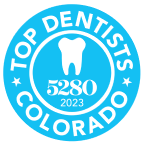 “You need a bone graft.” It’s not the most comforting sentence in the world. But, if your dentist tells you this, there is no need to worry! A dental bone graft procedure is actually common in dentistry, and it isn’t as scary (or as invasive) as it sounds. However, bone density is insufficient in some cases. This may be due to trauma, infection, or genetics. At Metropolitan Dental Care, our restorative dentist and periodontist offer bone grafting procedures to rebuild the jawbone for a healthy foundation.
“You need a bone graft.” It’s not the most comforting sentence in the world. But, if your dentist tells you this, there is no need to worry! A dental bone graft procedure is actually common in dentistry, and it isn’t as scary (or as invasive) as it sounds. However, bone density is insufficient in some cases. This may be due to trauma, infection, or genetics. At Metropolitan Dental Care, our restorative dentist and periodontist offer bone grafting procedures to rebuild the jawbone for a healthy foundation.
There are actually several reasons why this procedure may be necessary. Today, we will explore some of these reasons and discuss how this procedure can improve your overall oral health. If you are interested in learning more about bone grafting, contact our Lone Tree or Denver office at 303.534.2626.
Types of Bone Grafting Material
Before we discuss the reasons for a bone graft, we will explore the different types of bone grafting material. In decades past, bone had to be harvested from other parts of the body. As you can imagine, this was extremely invasive and quite painful. Today, most materials are purchased from a bone and tissue bank. The material can be harvested from a cadaver, or from animal sources, such as bovine or porcine. The bone is ground up, sterilized, and heated to such a degree that there are no living cells left behind. This bone material serves as a scaffold or matrix, to encourage your own body’s regenerative processes.
There are some cases today in which the doctor harvests the patient’s own bone for the procedure. However, it is taken from another area of the mouth – usually the jaw or chin.
Ridge Preservation after an Extraction
A ridge preservation, or socket preservation, is one of the most common types of oral bone grafts. If a tooth must be extracted, the socket can be filled with bone grafting material. This holds space during the healing process so the tissue doesn’t “cave in”.
It is much easier to perform a bone graft at the time of extraction than it is to undergo a second surgery. Typically, the process is more affordable this way, as well. Your doctor will let you know if you require a bone graft at the time of your extraction. If you will be replacing the tooth with a dental implant, it is most likely recommended.
Ridge Augmentation
Sometimes, the jawbone is too narrow. This may not be problematic, but it could be an issue if you are considering dental implants. A narrow jawbone can occur if teeth have been missing for a prolonged period of time. It can also be the result of genetics. No matter how the condition occurs, it can be repaired with a ridge augmentation procedure. This treatment involves “plumping up” the jawbone with bone grafting material and other regenerative substances. This may be performed in preparation for dental implants, or it may provide a more superior foundation for conventional dentures.
Sinus Lifts
If the upper molar teeth are missing, the maxillary sinus can drop down and invade the area once occupied by the roots. This can be problematic if you are thinking of replacing the missing teeth with implants. To move the sinus out of the way, a sinus lift can be performed. During this procedure, the doctor will gently raise the sinus membrane back to its original location and then pack the empty area underneath with bone grafting material. Over the next few months, the bone will be ready for implants. Many patients even notice an improvement in their breathing once the sinuses are back in the proper position.
Periodontal Bone Grafting
There is a specific type of bone grafting performed with the intent of saving teeth. This is called a periodontal bone graft, and it can be completed in conjunction with gum surgery. When bacteria and infection begin to erode the jawbone, pockets form around the teeth and harbor food, debris, and other irritants. This can lead to mobility if the condition is left untreated. In order to stabilize loose teeth and regenerate bone in these areas, a periodontal bone graft can be placed.
Contact Us to Learn More
If you are interested in learning more about bone grafting procedures performed by our Denver and Lone Tree dentist, call us. You can contact us online anytime, or call our office at 303.534.2626.

